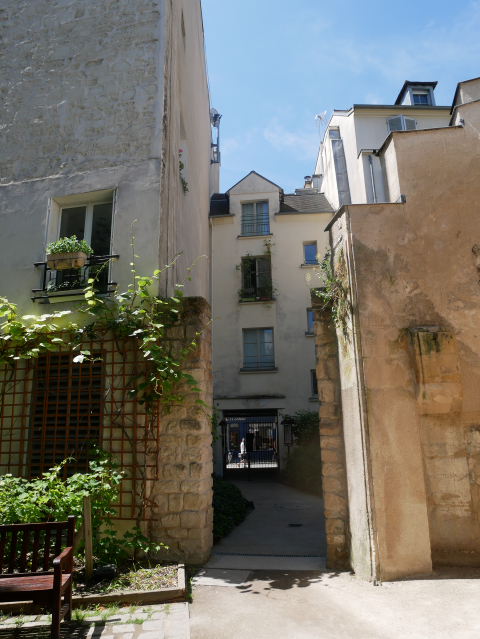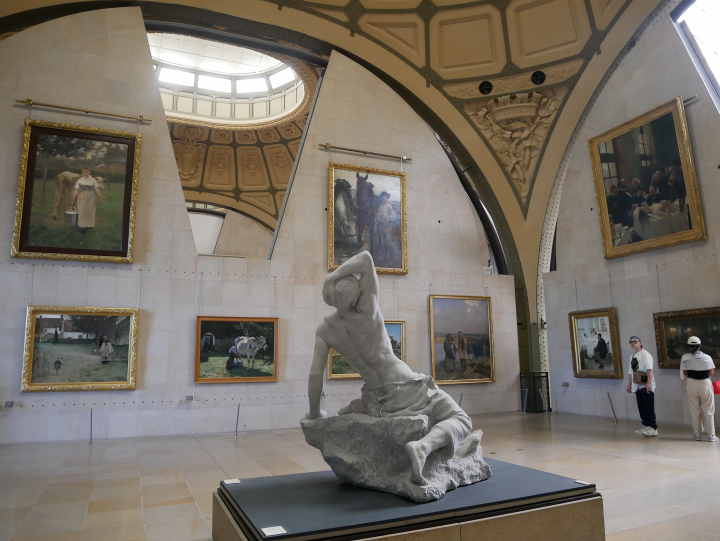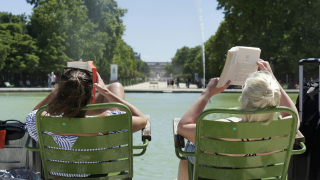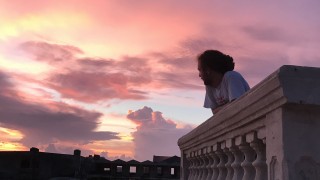"With our brilliant professors and the wonderful, accommodating staff at Reid Hall, I was immersed in the wonder of learning in an urban environment."
It was one o’clock in the morning in France. In late May, there are deep breezes that make the Springtime feel, especially in the evenings, vaguely autumnal. The streets of the thirteenth arrondissement were nearly bare, save a cyclist headed home under a warm streetlight. There was a soft rain, nearly absent, and there I was, on the balcony of the YouFirst student residence, looking distractedly between the idyllic neighborhood that, across the hills of the Parc de Montsouris, connected me to the metro station that connected me to the capillaries of Paris.

Equipped with a Navigo Découverte Monthly Pass (and they are really much easier to figure out than the website implies), I did occasionally take the metro, but my commute to class was roughly the same distance on foot; a thirty-minute walk North into Montparnasse revealed the unassuming blue doors to the small complex of Reid Hall, Columbia’s campus in Paris. It was an eclectic location, where one was always straddling the middle of two languages, ordering at the Caféothèque, guessing someone’s origin. The Creative Writing in Paris program, which was in its inaugural year when I participated in the summer of 2025, was taught in English, but the city, the courses, and its students were in a perpetual state of translation and transformation.
Though we relished the poetry and prose workshops on the third floor (one could always hear some gifted master’s student rehearsing the piano), much of our classwork followed Paris into her depths and showstoppers; we sat, for example, in that famed, wonderful cathedral in Saint Germain, followed the shining figure of James Baldwin into her cafés, tasted cheeses at the Musée du Fromage, and were moved into silence as we ventured outside of the city into the gardens of Giverny and the house of Stéphane Mallarmé. With our brilliant professors and the wonderful, accommodating staff at Reid Hall, I was immersed in the wonder of learning in an urban environment. The dual pedagogy of the city and curricula I sought in pursuing Columbia as an institution was echoed and enhanced.
It did not hurt that I was doing my favorite thing in the world–creative writing–nor that I was doing such under such renowned, credible faculty in a small-group, focused setting. As a Global Learning Scholar, Columbia provided the funds that made this experience possible to me; I was admitted off the waitlist for the program but was initially worried I could not attend. The funds from the scholarship covered not only class-sponsored expenses, but the stipend provided allowed me to visit those great museums of Paris: the Louvre, Musée de Montmartre, Musée d’Orsay, Musée Rodin, MahJ, the Pompidou, and many others. Though I embraced being a flâneur (or flâneuse–the feminist spin on the term), the Global Learning Scholarship opened the doors of Paris to me.

As a writer (or really as someone trying to become a writer), a new environment (and of such a wonderful, storied, and deeply haunted city) was incredibly inspirational. I wrote the most I ever had in Paris. Focusing entirely on two creative writing classes (as a non-creative writing major!), I was free to both experiment and obsess over topics, write close to and far from myself, and engage deeply with the coursework and texts. Lines from texts I read in my classes still linger with me (“What are the consequences of silence?” by Bhanu Kapil; a portion from Paris, When It’s Naked by Etel Adnan). It was my first time alone in a foreign country. It was an opportunity to reconnect with my French family and be immersed in the language with the support of my university. I could not have asked for a better study abroad experience. There is something difficult to phrase about being an étrangère; something strange, terrible, and revelatory. I wrote thousands of words about it already, and I feel, within me, there are still more.


